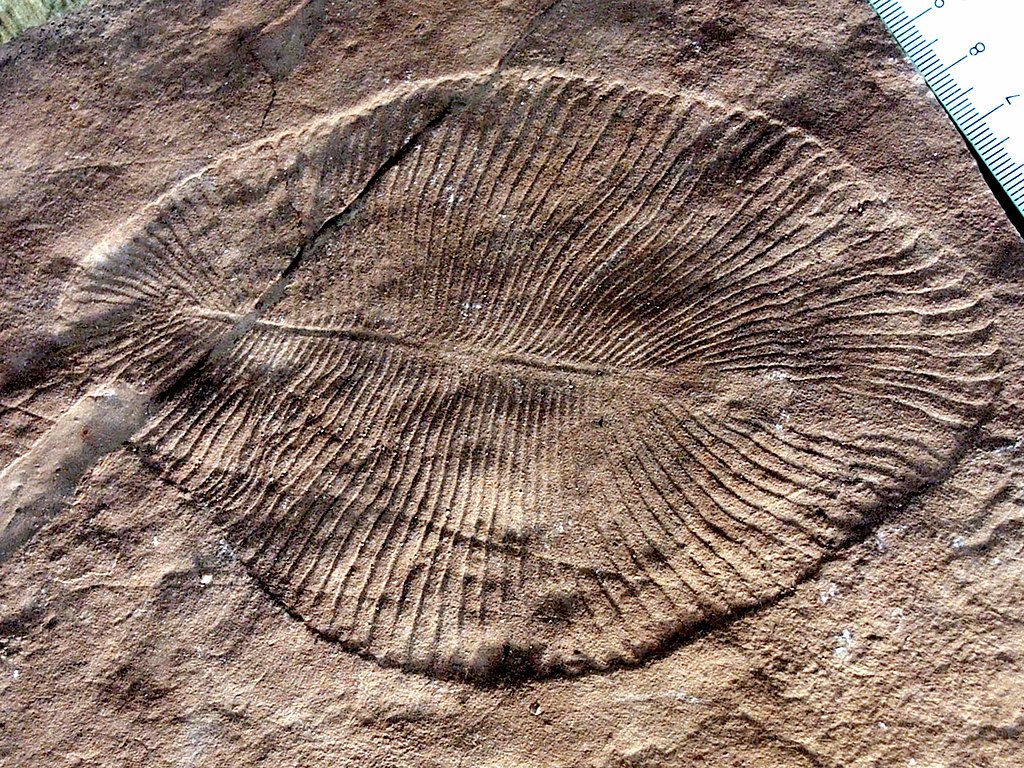
Mysterious Ediacaran Dickinsonia, from 550 mya was definitely an animal, they say. [pic] From ScienceDaily:
‘Dickinsonia belongs to the Ediacaran biota — a collection of mostly soft-bodied organisms that lived in the global oceans between roughly 580 and 540 million years ago. They are mysterious because despite there being around 200 different species, very few of them resemble any living or extinct organism, and therefore what they were, and how they relate to modern organisms, has been a long-standing palaeontological mystery.’
In 1947, Dickinsonia became one of the first described Ediacaran fossils and was initially thought to be an organism similar to a jellyfish. Since then, its strange body plan has been compared to that of a worm, a placozoan, a bilaterian and several non-animals including fungi, lichens and even entirely extinct groups.
…
Dickinsonia is composed of multiple ‘units’ that run down the length of its body. The researchers counted the number of these units in multiple specimens, measured their lengths and plotted these against the relative ‘age’ of the unit, assuming growth from a particular end of the organism. This data produced a plot with a series of curves, each of which tracked how the organism changed in the size and number of units with age, enabling the researchers to produce a computer model to replicate growth in the organism and test previous hypotheses about where and how growth occurred.
Dr Hoekzema said: ‘We were able to confirm that Dickinsonia grows by both adding and inflating discrete units to its body along its central axis. But we also recognised that there is a switch in the rate of unit addition versus inflation at a certain point in its life cycle. All previous studies have assumed that it grew from the end where each “unit” is smallest, and was therefore considered to be youngest. We tested this assumption and interpreted our data with growth assumed from both ends, eventually coming to the conclusion that people have been interpreting Dickinsonia as having grown at the wrong end for the past 70 years.
‘When we combined this growth data with previously obtained information on how Dickinsonia moved, as well as some of its morphological features, we were able to reject all non-animal possibilities for its original biological affinity and show that it was an early animal, belonging to either the Placozoa or the Eumetazoa.
‘This is one of the first times that a member of the Ediacaran biota has been identified as an animal on the basis of positive evidence.’
Dr Liu added: ‘This finding demonstrates that animals were present among the Ediacaran biota and importantly confirms a number of recent findings that suggest animals had evolved several million years before the “Cambrian Explosion” that has been the focus of attention for studies into animal evolution for so long. Paper. (paywall) – Renee S. Hoekzema, Martin D. Brasier, Frances S. Dunn, Alexander G. Liu. Quantitative study of developmental biology confirms Dickinsonia as a metazoan. Proceedings of the Royal Society B: Biological Sciences, 2017; 284 (1862): 20171348 DOI: 10.1098/rspb.2017.1348 More.
The even-more-ancient Ediacaran is becoming the new Cambrian, with all that that means for the myth of the slow, sure hand of Darwinian evolution…
See also: Animal with muscles found from 560 mya (Ediacaran period) (Also. they say, an animal, and maybe a bit older. All this would make an interesting symposium.)
and
Stasis: Life goes on but evolution does not happen